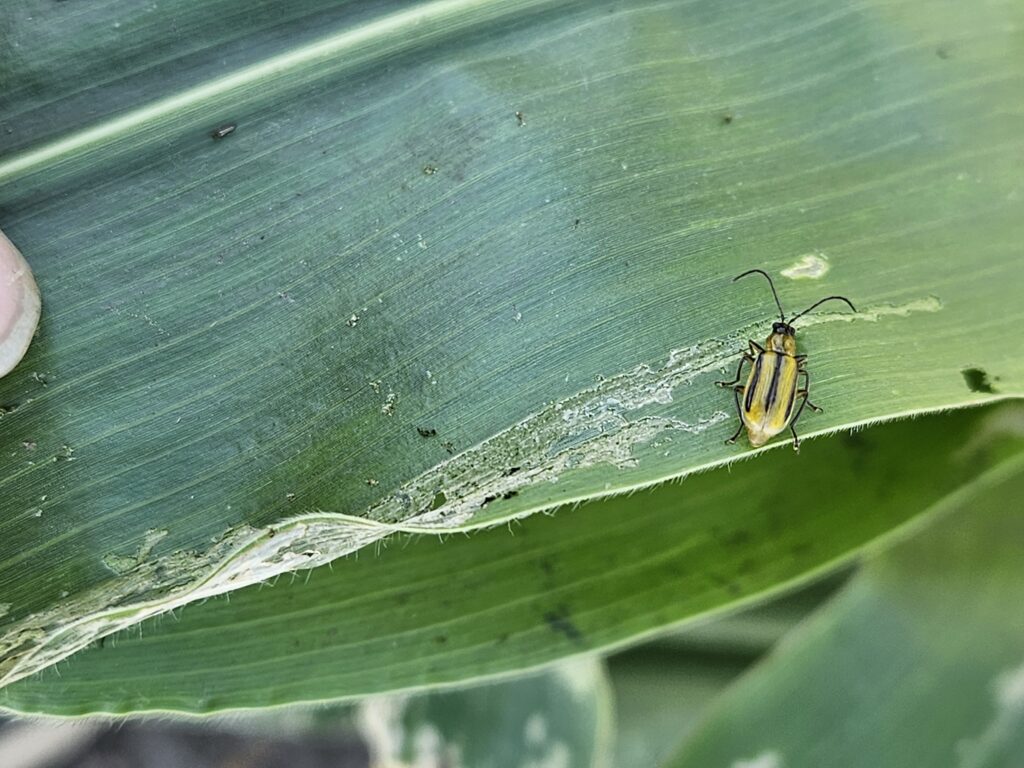Rootworm Beetle Emergence – 2024 Monitoring Program

Corn rootworm beetles will begin emerging throughout Illinois over the next couple of weeks (we noticed the first few western corn rootworm beetles of the year at our Urbana field site earlier this week). There are a number of things we can learn by keeping track of corn rootworm emergence, particularly in fields that have a history of rootworm problems:
- Control performance. Usually, our first indication that a local population is developing resistance to a Bt trait package is elevated numbers of beetles emerging from traited corn; if we are watching closely, we tend to notice this before larval pruning is sufficient to reduce yields. Of course, the beetles are mobile, so you should still dig some roots to see what is happening below ground, but elevated beetle numbers emerging from traited corn can be a good early indicator of resistance development.
- Species complex. While western and northern corn rootworm are managed similarly and cause identical feeding injury, there are some key differences. In particular, northern corn rootworm populations have the potential for extended diapause.
- Potential for injury next season. Observing beetle numbers during late July and early August (when egg laying usually reaches its peak) is the most reliable way to predict the potential for rootworm feeding injury to corn roots next season.
Since 2021, we have participated in a regional monitoring program for corn rootworm adults (you can see annual reports from the monitoring network here: https://cornrootworm.extension.iastate.edu/adult-trapping-network). We distribute traps and instructions to willing farmers and consultants every year, who set up a line of 4 traps in a selected field(s) and report the numbers back to us. It’s an effective and relatively easy way to get a regional picture of rootworm population trends.
If you would like to participate in the monitoring network for 2024, send me an email (nseiter@illinois.edu) with “rootworm trapping network” in the subject line.
If you notice elevated rootworm beetle numbers this year (or have during the last several years) but do not have the appetite to set sticky traps, that’s ok – in addition to trapping, we are looking to assess western and northern corn rootworm populations for resistance to Bt traits. We will also be looking at extended diapause in northern corn rootworm. This is an easier ask: if you have a field where we are likely to find a lot of beetles in a hurry, simply shoot me an email or give me a call with directions to the field and we will take care of the rest. We need to be able to collect 500-1,000 beetles in less than an hour to get a good collection. In addition to field corn, some of our best collections have come from nearby sweet corn plots or pumpkin patches.
For more information on rootworm control performance, go to https://go.illinois.edu/pestmanagementresearchreport
Contact: Dr. Nick Seiter, Field Crop Entomologist | nseiter@illinois.edu | (812) 593-4317





